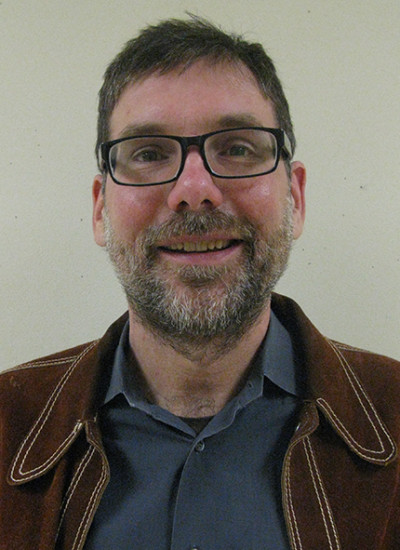Matthew Hj Cordes
Publications
PMID: 16332712;Abstract:
Motivation: Spiders in the genus Loxosceles, including the notoriously toxic brown recluse, cause severe necrotic skin lesions owing to the presence of a venom enzyme called sphingomyelinase D (SMaseD). This enzyme activity is unknown elsewhere in the animal kingdom but is shared with strains of pathogenic Corynebacteria that cause various illnesses in farm animals. The presence of the same toxic activity only in distantly related organisms poses an interesting and medically important question in molecular evolution. Results: We use superpositions of rece ntly determined structures and sequence comparisons to infer that both bacterial and spider SMaseDs originated from a common, broadly conserved domain family, the glycerophosphoryl diester phosphodiesterases. We also identify a unique sequence/structure motif present in both SMaseDs but not in the ancestral family, supporting SMaseD origin through a single divergence event in either bacteria or spiders, followed by lateral gene transfer from one lineage to the other. © The Author 2005. Published by Oxford University Press. All rights reserved.
Bacteriophage Cro proteins bind to target DNA as dimers but do not all dimerize with equal strength, and differ in fold in the region of the dimer interface. We report the structure of the Cro protein from Enterobacteria phage N15 at 1.05 A resolution. The subunit fold contains five alpha-helices and is closely similar to the structure of P22 Cro (1.3 A backbone room mean square difference over 52 residues), but quite different from that of lambda Cro, a structurally diverged member of this family with a mixed alpha-helix/beta-sheet fold. N15 Cro crystallizes as a biological dimer with an extensive interface (1303 A(2) change in accessible surface area per dimer) and also dimerizes in solution with a K(d) of 5.1 +/- 1.5 microM. Its dimerization is much stronger than that of its structural homolog P22 Cro, which does not self-associate detectably in solution. Instead, the level of self-association and interfacial area for N15 Cro is similar to that of lambda Cro, even though these two orthologs do not share the same fold and have dimer interfaces that are qualitatively different in structure. The common Cro ancestor is thought to be an all-helical monomer similar to P22 Cro. We propose that two Cro descendants independently developed stronger dimerization by entirely different mechanisms.
PMID: 19042943;PMCID: PMC2767091;Abstract:
The venom enzyme sphingomyelinase D (SMase D) in the spider family Sicariidae (brown or fiddleback spiders [Loxosceles] and six-eyed sand spiders [Sicarius]) causes dermonecrosis in mammals. SMase D is in a gene family with multiple venom-expressed members that vary in functional specificity. We analyze molecular evolution of this family and variation in SMase D activity among crude venoms using a data set that represents the phylogenetic breadth of Loxosceles and Sicarius. We isolated a total of 190 nonredundant nucleotide sequences encoding 168 nonredundant amino acid sequences of SMase D homologs from 21 species. Bayesian phylogenies support two major clades that we name α and β, within which we define seven and three subclades, respectively. Sequences in the α clade are exclusively from New World Loxosceles and Loxosceles rufescens and include published genes for which expression products have SMase D and dermonecrotic activity. The β clade includes paralogs from New World Loxosceles that have no, or reduced, SMase D and no dermonecrotic activity and also paralogs from Sicarius and African Loxosceles of unknown activity. Gene duplications are frequent, consistent with a birth-and-death model, and there is evidence of purifying selection with episodic positive directional selection. Despite having venom-expressed SMase D homologs, venoms from New World Sicarius have reduced, or no, detectable SMase D activity, and Loxosceles in the Southern African spinulosa group have low SMase D activity. Sequence conservation mapping shows >98% conservation of proposed catalytic residues of the active site and around a plug motif at the opposite end of the TIM barrel, but α and β clades differ in conservation of key residues surrounding the apparent substrate binding pocket. Based on these combined results, we propose an inclusive nomenclature for the gene family, renaming it SicTox, and discuss emerging patterns of functional diversification. © The Author 2008. Published by Oxford University Press on behalf of the Society for Molecular Biology and Evolution. All rights reserved.
Venoms of brown spiders in the genus Loxosceles contain phospholipase D enzyme toxins that can cause severe dermonecrosis and even death in humans. These toxins cleave the substrates sphingomyelin and lysophosphatidylcholine in mammalian tissues, releasing the choline head group. The other products of substrate cleavage have previously been reported to be monoester phospholipids, which would result from substrate hydrolysis. Using (31)P NMR and mass spectrometry we demonstrate that recombinant toxins, as well as whole venoms from diverse Loxosceles species, exclusively catalyze transphosphatidylation rather than hydrolysis, forming cyclic phosphate products from both major substrates. Cyclic phosphates have vastly different biological properties from their monoester counterparts, and they may be relevant to the pathology of brown spider envenomation.
PMID: 16408046;Abstract:
From the complex behavior of multicomponent signaling networks to the structures of large protein complexes and aggregates, questions once viewed as daunting are now being tackled fearlessly by protein scientists. The 19th Annual Symposium of the Protein Society in Boston highlighted the maturation of systems biology as applied to proteins.


